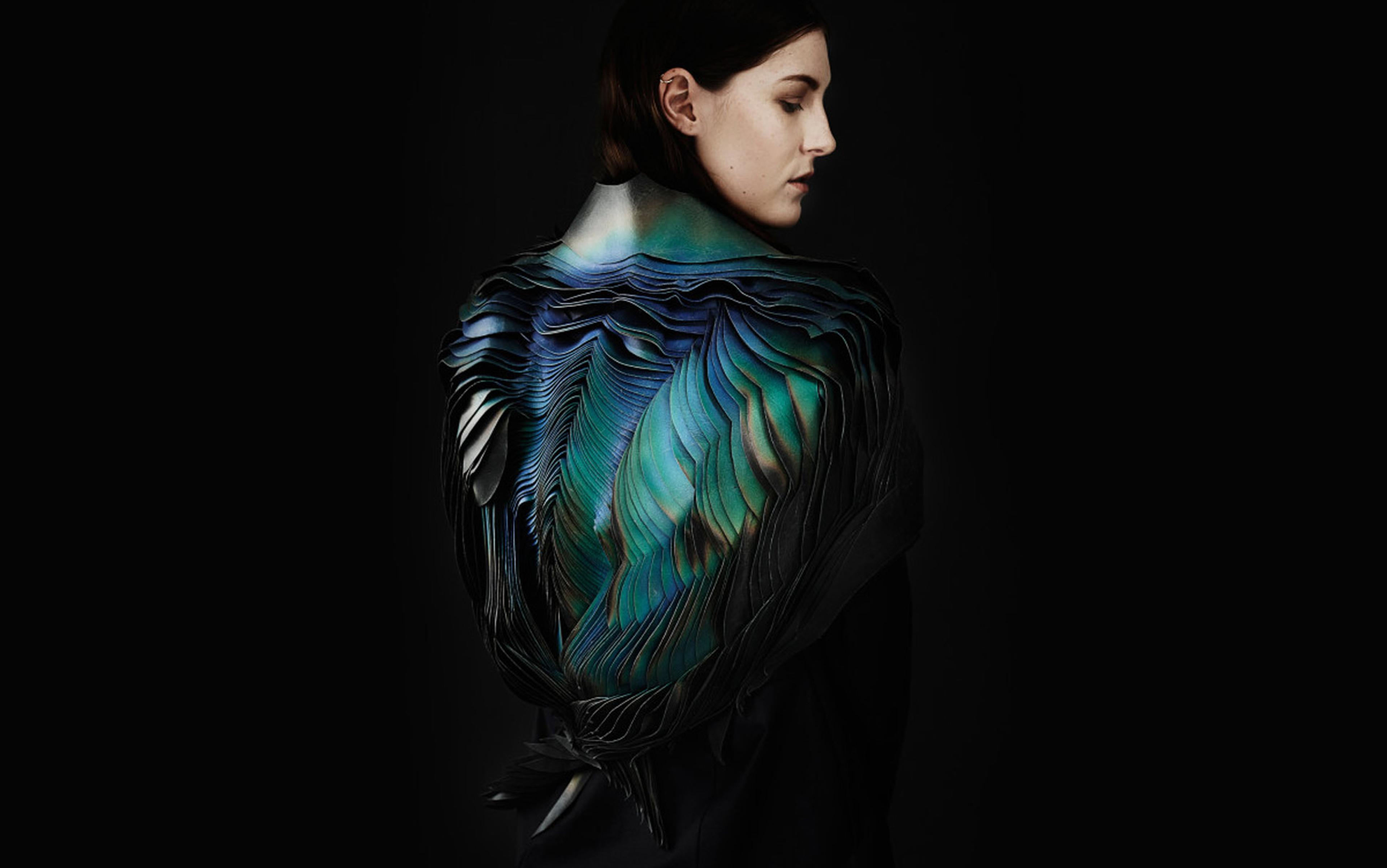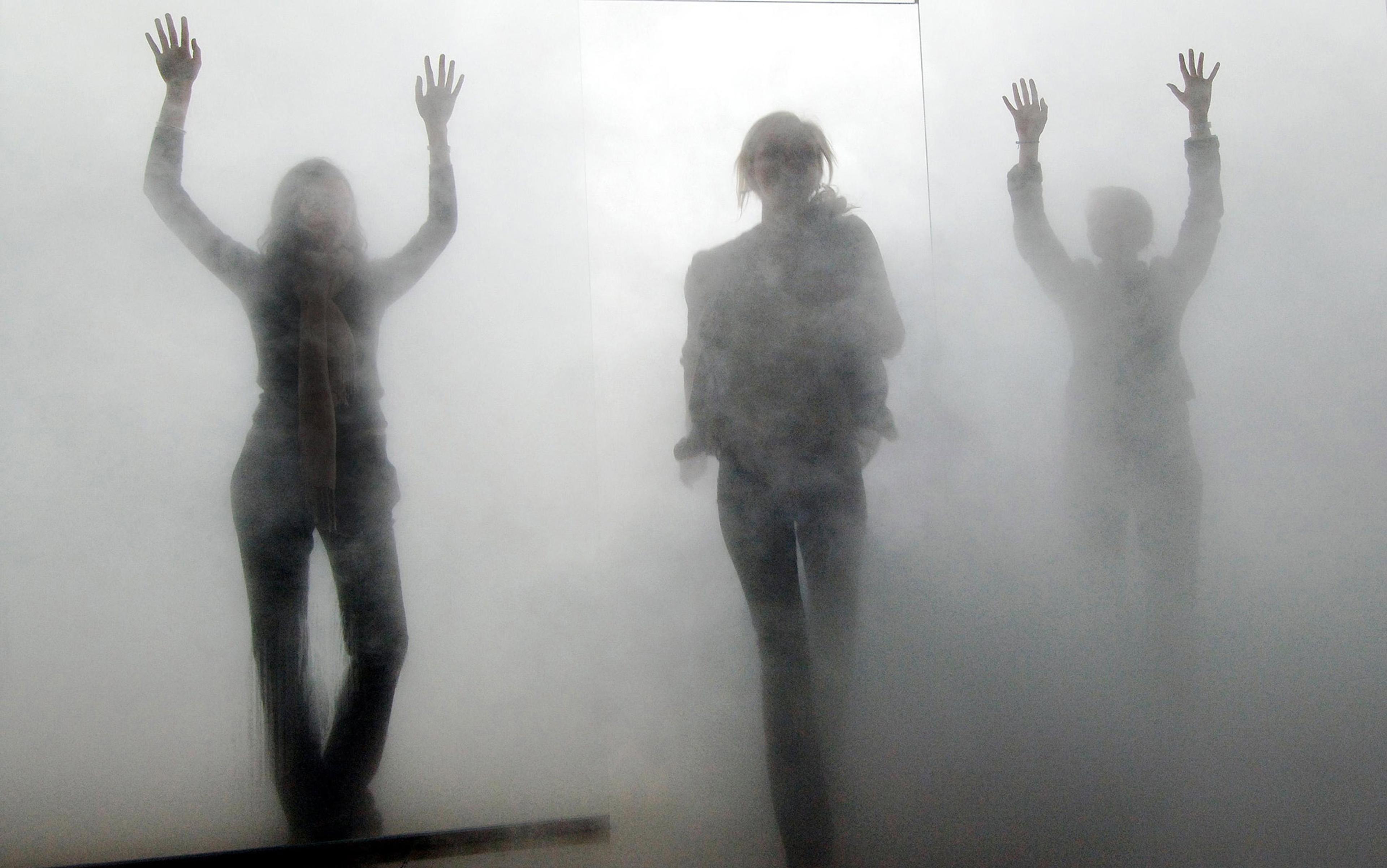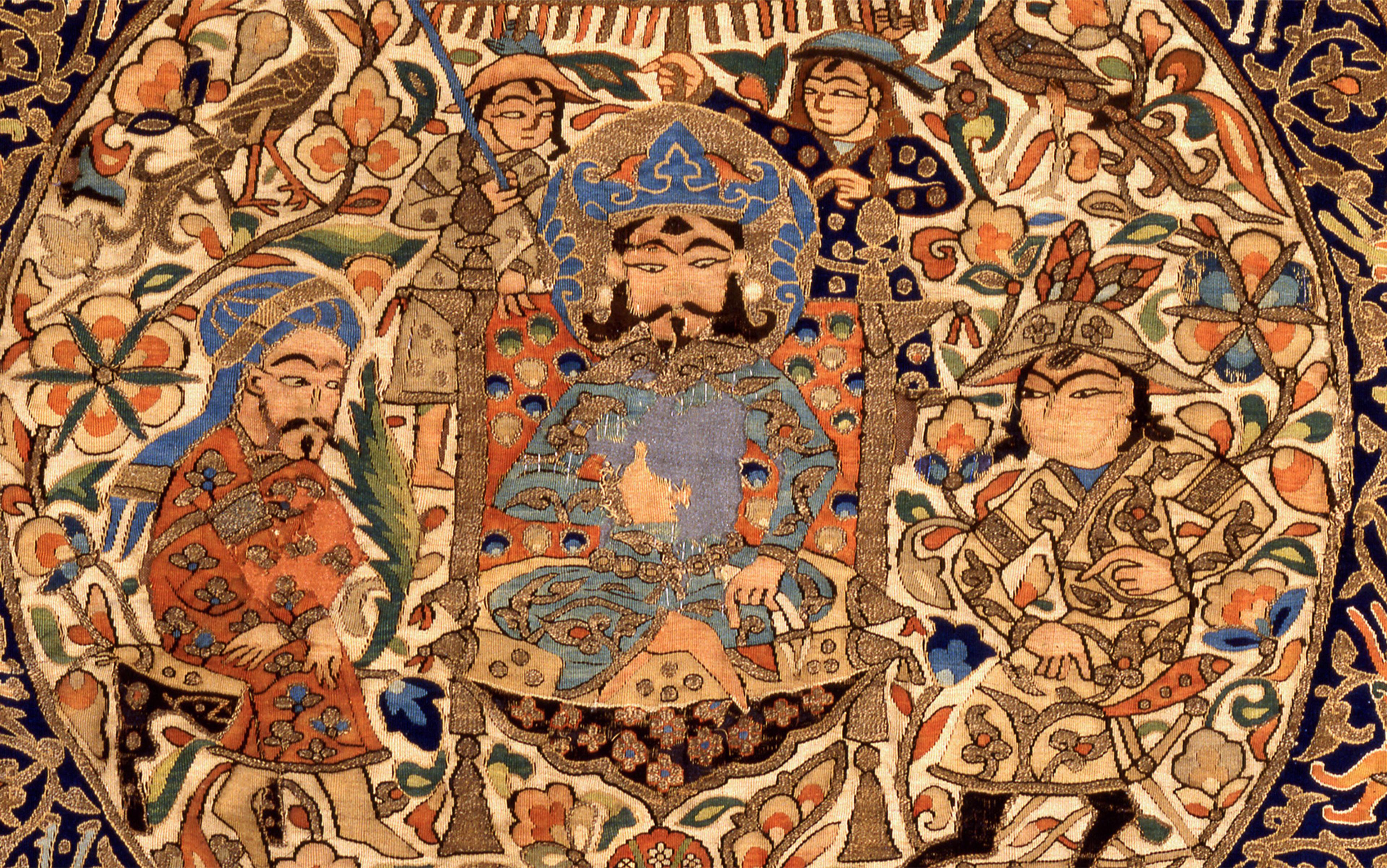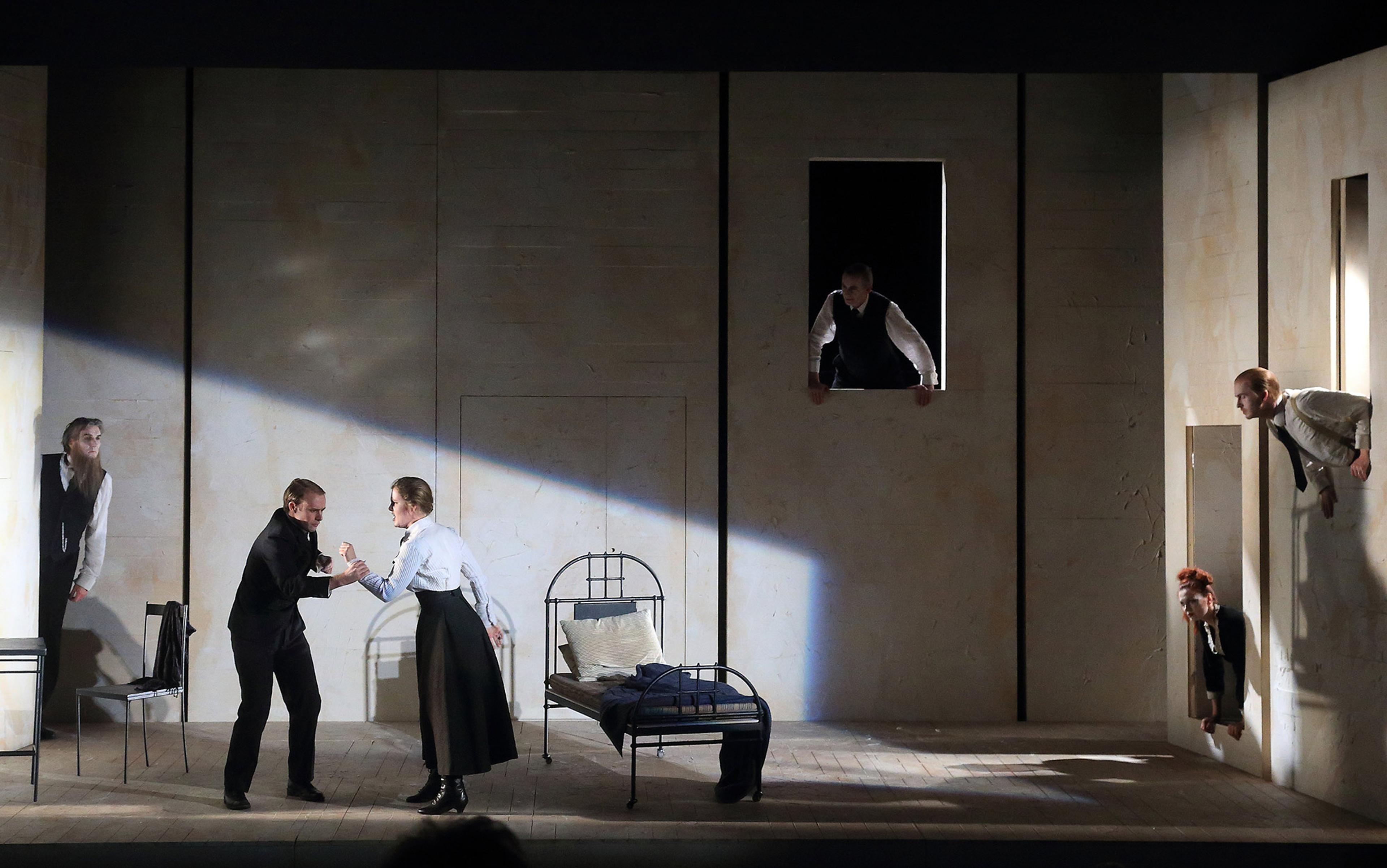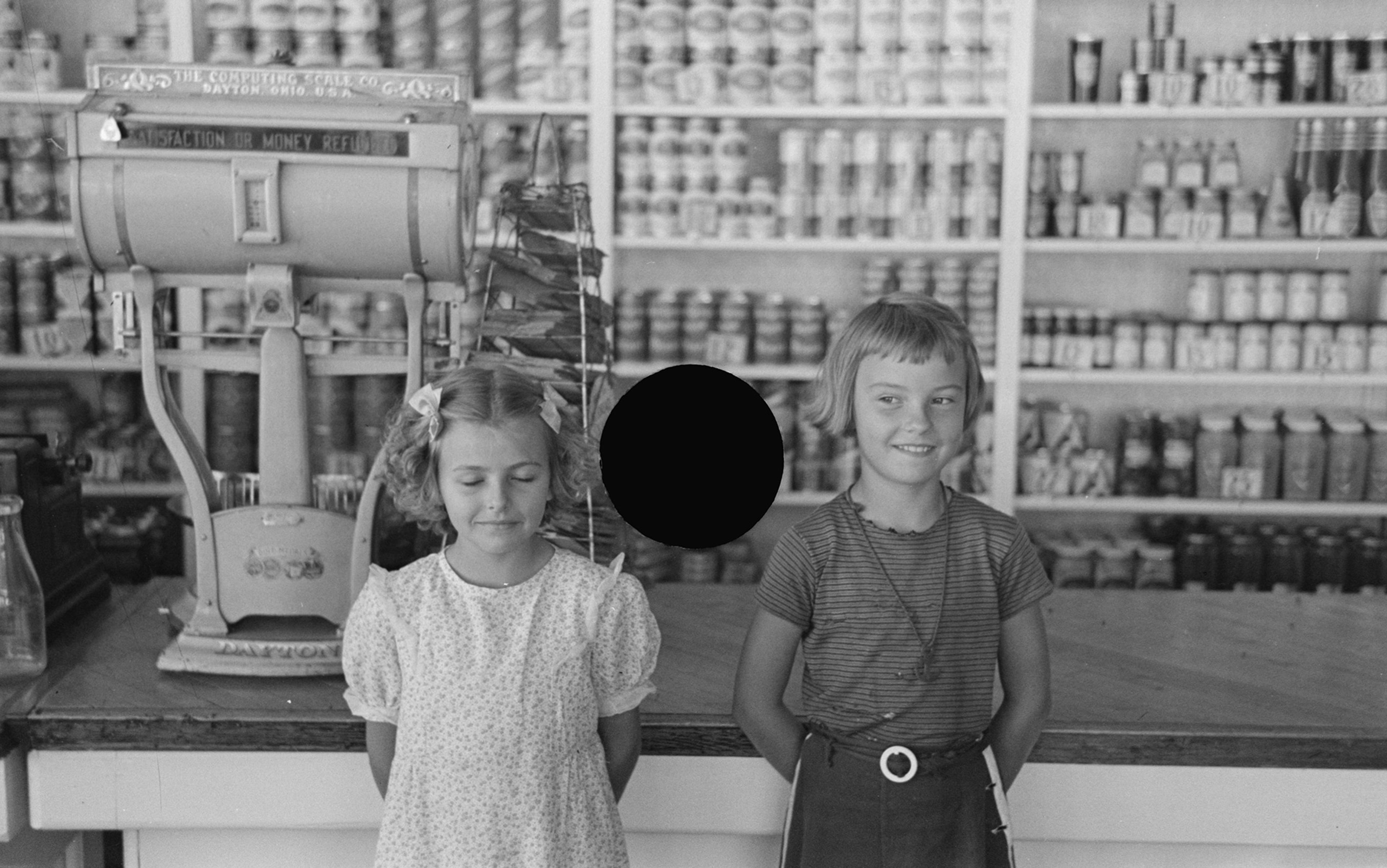In an article appearing in the November issue of the 1854 The Ladies’ Repository entitled ‘Interesting to Ladies’, the author known only as ‘Fanny’ provides passages from a needlework book written by a Mrs Ann S Stephens. Discussing crochet as ‘a modern invention’, Stephens highlights how it is a ‘gentle means by which women are kept feminine and lady-like in this fast age’. She continues: ‘On no occasion does a lady seem more lovely than when half occupied with some feminine art which keeps her fingers employed, and gives an excuse for downcast eyes and gentle pre-occupation.’
Stephens’s statement is emblematic of the Victorian ideal of femininity: the domesticated female, submissive, head bowed and quietly lost in her task. Scrolling online through women’s magazines from the 19th century, textile patterns demonstrate the expected behaviour of wives and the social position of women: there are patterns for table runners, children’s dresses, handkerchiefs, pinafores and aprons.
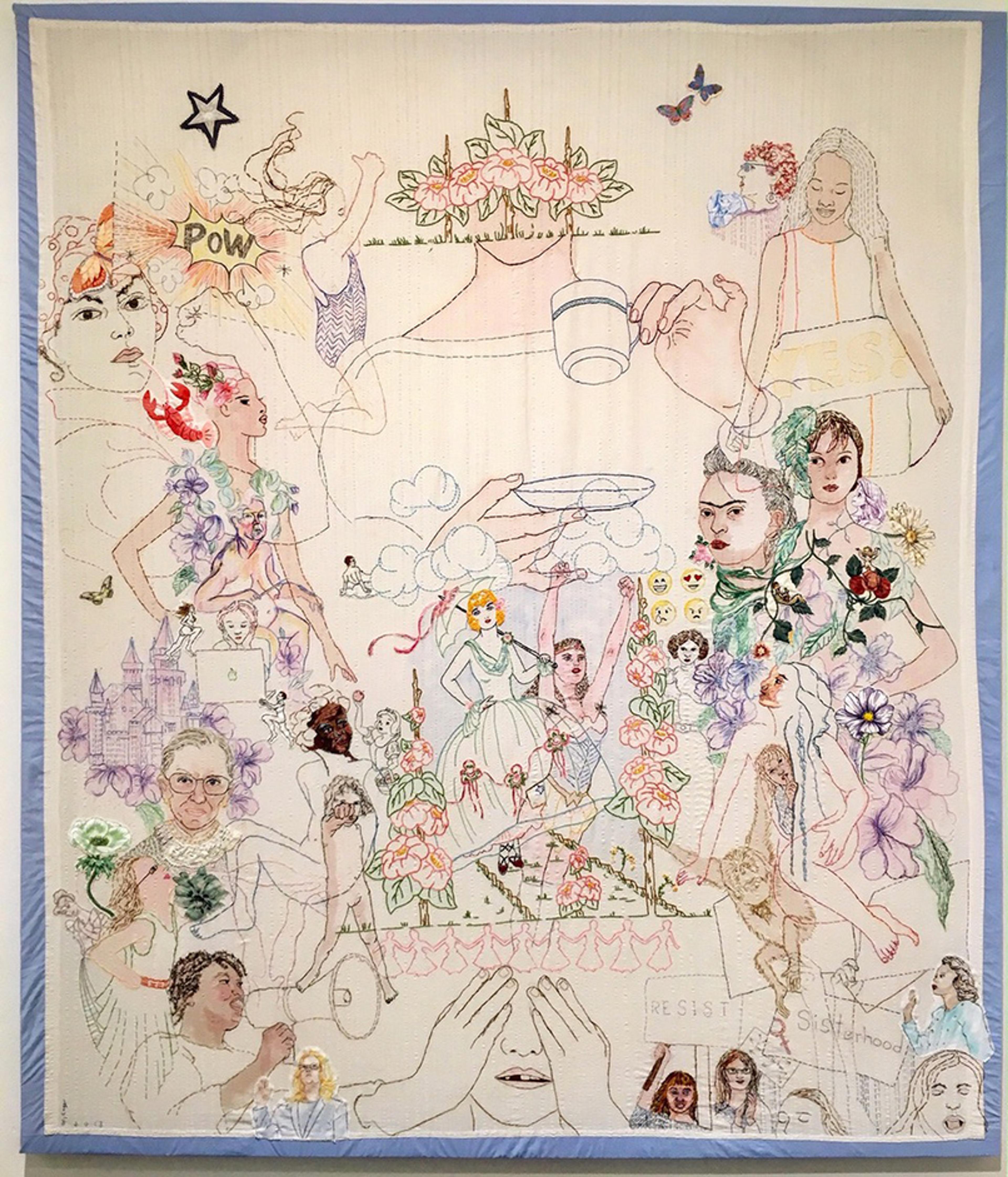
The Power Of Woman (POW) (2019) by Orly Cogan. Hand-stitched embroidery, appliqué, crochet and paint on vintage bed linen. Image © and courtesy the artist
Fast forward more than a century and women are using thread in ways very different to the Victorian ideal. The artist Orly Cogan embroiders the ‘unladylike reality’ of contemporary women’s lives; Sarah Leonard uses sequins and beads to recreate all aspects of the male and female genitalia; and Natalie Baxter created a collection of ‘colourfully quilted, droopy, caricatures of assault weapons’.
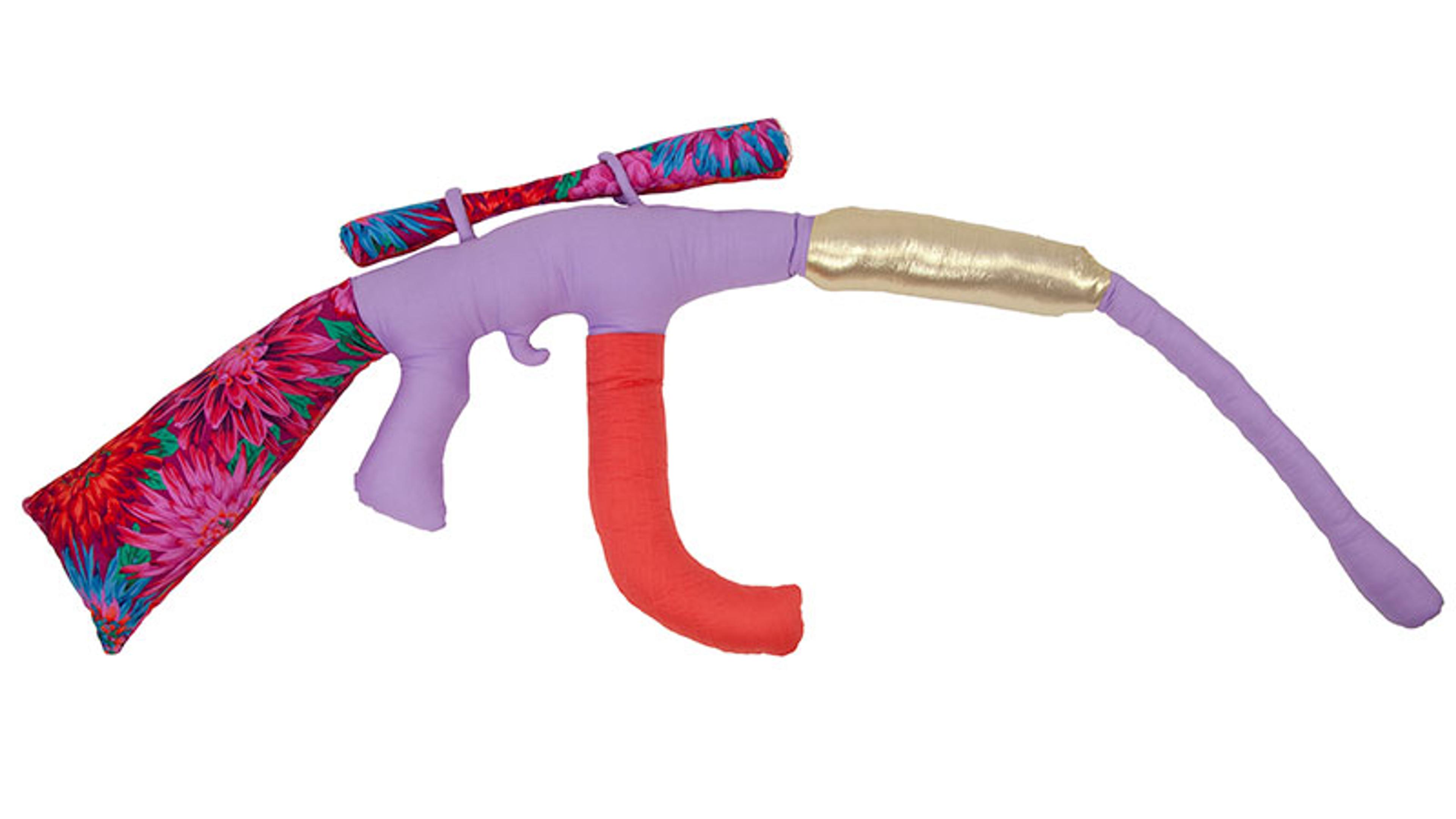
My Super Sweet M Sixteen (2015) by Natalie Baxter, from the series Warm Gun. Courtesy and © Natalie Baxter
This shift is indicative of a resurgence in women’s use of thread, not as a domestic activity – but as a form of protest. Yet, given the sexist connotations associated with acts such as embroidery, knitting and crochet, why would women, and particularly feminists, choose this medium as a vehicle for their message?
‘I’m so angry I stitched this just so I could stab something 3,000 times’ is a statement cross-stitched by the artist Shannon Downey, which she displayed at the 2017 Women’s March in Chicago. The photograph of her creation went viral, epitomising what we now describe as ‘craftivism’.
Combining the words ‘craft’ and ‘activism’, the term was coined by the artist Betsy Greer in 2003. Greer was inspired by the idea of ‘quiet activism’ and creating work that ‘gets people to ask questions’. Since then, the term has grown in popularity and crafters have become involved in acts such as yarnbombing and guerrilla knitting. In such ‘quiet’ protests, craftivists cover spaces and objects in yarn, often to make a social or political message. Notable examples include Marianne Jørgensen’s pink-yarn-covered military tank, a challenge to Denmark’s involvement in the Iraq War, and Viva Vittoria’s yarnbombing of Italian piazzas to raise awareness of violence against women.
Regardless of its growth in popularity, the use of thread by women as a form of protest is not without its critics. The fashion scholar Eleanor O’Neill, writing specifically about knitting, argues that the potency of yarnbombing relies on the understanding of knitting as feminine and domestic. In turn, this reinforces gender stereotypes and presents ‘knitting as a marginal craft, eternally tethered to the domestic, with a limited and superficial role in contemporary society.’
Women are using the tools that were traditionally meant to confine them as a means to chip away at oppression
The columnist Petula Dvorak raised a similar point in the The Washington Post. Lamenting the way women planned to wear knitted pink ‘pussyhats’ at the 2017 Women’s March in Washington, DC as protest against the incoming administration of Donald Trump and in the promotion of women’s human rights, Dvorak described it as nothing more than ‘she-power frippery’. From her perspective, ‘we can’t make a difference with goofy hats, cheeky signs and silly songs.’ Her fear was that the protest, which was meant to highlight serious human rights issues, would become frivolous and its message undermined. In other words, its power and impact would be lost under a sea of pink knitting.
Yet, when women use crafts typically perceived as feminine such as knitting, crochet and embroidery as a form of protest, does this not create its own form of subversive power? Instead of reinforcing gender stereotypes, is this a demonstration of women’s ability to undermine patriarchy with its own sexist tropes? Arguably, women are using the tools that were traditionally meant to confine them as a means to chip away at oppression. They are appropriating the mediums, manipulating them to their own advantage, and using these unthreatening methods to draw in the viewer and transfer their message.
In her book The Subversive Stitch (1984), and quoting the author Colette, the feminist art historian Rozsika Parker hints at the dangers of presuming the frivolity and mindlessness of stitching. In reference to her daughter, Colette writes:
[She] is silent when she sews, silent for hours on end … She is silent, and she – why not write down the word that frightens me – she is thinking.
Colette’s quote introduces the idea that there is much more to women’s use of thread as a form of protest than simply an emulation of historical sexist tropes. Something far deeper is happening. Its power may not be immediately visible, nor its statements overt and public. Yet there is impact: frequently subversive, often personal and sometimes far-reaching.
I reflected on this when I met over Zoom with Veronica Mitchell, a facilitator and researcher in medical education at the University of Cape Town in South Africa. Alongside Puleng Segalo, a professor of psychology at the University of South Africa, she worked with 17 women from the Intuthuko Embroidery Project to document their experiences of obstetric violence. Pressing her phone to the screen, Mitchell showed me an example of one of the embroideries. To the right of the piece was the back of an ambulance. At the centre were two nurses moving a medical trolley through an outdoor space. On top of the trolley and attached to a drip was the outline of a pregnant woman, her body and face covered with a blue-and-red sheet. Mitchell explained how the scene depicts the death of a participant’s pregnant sister 22 years earlier while waiting for an ambulance to arrive.

Admissions process and environment not conducive to care. All images courtesy the Intuthuko Embroidery Project

Nurses engaged with each other and their drinks rather than with the woman in need

Birthing alone in an ambulance

Nurses otherwise occupied
There is something unsettling about the neatness of the stitches and the bright colour of the thread used to portray such devastating loss. As Mitchell highlighted, the image strongly reflects the problems within the South African healthcare system, and particularly those related to medical transport.
Beyond their display in galleries, I asked Mitchell about the impact the embroideries had made. She noted the hidden stories emerging from the threads and the way she uses these images to inform and educate trainee healthcare professionals. Although not the goal of the project, the therapeutic nature of the textiles’ creation was also key. Women could confront their own traumatic experiences in slow time. And while the images did not reflect the tattered nature of the South African public health hospital, instead featuring immaculate floors and walls, participants noted this depicted how they wished the hospital had looked. The embroideries therefore reflected both an alternative and imaginative way of providing maternity care. Reflecting critical art more generally, the textiles demonstrated, as the conflict scholar Cindy Horst argued of art in times of oppression, ‘both critique of the present and visions of an alternative future’.
Women’s use of thread can also be instrumental in maintaining cultural heritage and history. As Alida Jekabson, a doctoral student in art history at the University of California, Santa Barbara, highlights, this can be particularly relevant ‘as a strategy for maintaining cultural memory in exile’. It can also be a form of healing for communities responding to colonisation.
Enabling collective creation, especially across nationalities and borders, sidesteps the need for a common spoken language
I discussed this with the Palestinian textile artist Aseel. Now a student in the United States, her viral Instagram post on tatreez – a Palestinian form of embroidery – had caught my eye. She explained how tatreez was originally a social activity carried out by women. Each community had its own distinctive patterns, threads and colours, and women would embroider their identities, and personal and familial narratives into their thobes (traditional Palestinian dresses). Examples of tatreez from the Metropolitan Museum of Art in New York reveal intricate and detailed designs often resembling a form of cross-stitch with red or black thread. Over time, Aseel highlighted, the skill diminished as younger generations turned to machine-embroidered tatreez and the practice began to lose its traditional prominence and personal connection.
Today, Aseel informed me, the resurfacing and relearning of the traditional skill of tatreez has become a form of resistance. As the textile curator Jeni Allenby writes, it is ‘an expression of national identity, of symbolic defiance without violence.’ For Aseel and other displaced Palestinians, it is also a coping mechanism and a way to connect to their cultural heritage amid grief. She states:
For me, the act of creating and wearing hand-embroidered thobes is a statement that, despite the challenges and violence, the culture endures and thrives. It serves as a reminder that we Palestinians are not merely passive victims of conflict but active agents of our cultural and political narrative.
While the embroidery itself may not always be created for public display, the sharing of the skill and its regeneration within the diaspora affirms Palestinian cultural heritage and resists attempts at its erasure. Simply put, its mere existence becomes the protest.
Textile projects challenging injustice can be instrumental not only in platforming women’s culture and experiences, but also in the promotion of community. The artist Kirstie Macleod’s project The Red Dress began in 2009 as a collaborative artwork in which people – mostly women – from around the world embroidered motifs reflecting their culture and identity onto pieces of a red silk dress. The garment’s display began in art galleries with Macleod encased inside in a Perspex cube embroidering onto the swathes of material flowing from the dress while she was wearing it. This articulated feelings of women’s oppression, containment and of being trapped while under the male gaze. After a few years, Macleod realised the presentation of the work needed to change to allow the focus to be on the embroidery, embroiderers’ stories and on women’s strength and empowerment, so she removed herself and the cube, and the dress is now displayed simply on a mannequin on top of a plinth.
When I chatted to Macleod online, she highlighted that the dress now had contributions made by 380 embroiderers from 51 countries around the globe. It has been exhibited in 14 nations, including Hampi, India and Cairo, Egypt, and was most recently on display in Dorset in the United Kingdom. Becoming absorbed in the embroidered images on the website, I am drawn to the motif created by an anonymous Iranian woman who became a refugee in the UK. She described herself as a ‘woman without voice’, embroidering the words ‘Woman Life Freedom’ on the dress. In comments alongside the image, the artist described feelings of guilt at not being in Iran during the recent protests for democracy. However, she noted that her embroidery commission made her feel a connection to the Iranian people and a sense of purpose.
In Threads of Life (2019), the textile artist Clare Hunter notes that textiles such as these are ‘imbued with the spirits of the disparate people who create them’. Enabling collective creation, especially across nationalities and borders, sidesteps the need for a common spoken language, argue the design scholar Anne Louise Bang and her colleagues, while also ‘creating a non-verbal bond between speakers of different languages’. As Macleod highlighted, commonalities in experiences became apparent as embroiderers of The Red Dress recognised their own story in the contributions made by others. In short, projects such as Macleod’s enable the projection of individual stories alongside the creation of one shared message.
Women protesting with thread is nothing new. Early examples appear in Greek myth with the story of Philomela, who embroiders her story after her tongue is cut out, while Mary, Queen of Scots is reputed to have embroidered symbolic challenges to the imprisonment imposed on her by her cousin Queen Elizabeth I of England. Yet some historical protests are less well known – private almost – and reflect both courage and resistance in times of social upheaval and personal pain.
In All That She Carried (2021), Tiya Miles describes the true story of ‘Ashley’s sack’. On hearing her nine-year-old daughter Ashley was to be sold, Rose, an enslaved mother living in 19th-century South Carolina, US, filled a nondescript cotton sack with ‘a tattered dress 3 handfulls of pecans a braid of Roses hair’ and her ‘Love always’. We know this because three generations later, in 1921, Rose’s great-granddaughter Ruth embroidered the story on the fraying and stained fibres.
In an era that had no respect for the importance of African American familial relations, when children could be torn from their parents at whim, Rose’s gift to Ashley is an act of defiance that confirms the love between a mother and a daughter. Not only this, but Ruth’s embroidery, at a time when African Americans still lived under oppressive circumstances, is a reminder of the tyranny of slavery and the power of matrilineal heritage. Both are acts of protest: subversive, secretive and personal. Neither are public displays of resistance, yet the power of the acts remains palpable.
Chilean women used basic materials – and, hauntingly, the clothes of their missing relatives – as a demonstration of resistance
In a similar vein was the plight of Lorina Bulwer, a woman born in 19th-century Suffolk. She is captured in the 1901 England and Wales census, confined to the Great Yarmouth workhouse, aged early 60s, and categorised as a ‘lunatic’. Clearly frustrated with her incarceration, Bulwer sewed tightly written protestations in angry capitalised lettering on textile scrolls. While some sentences are vitriolic and difficult to decipher, others are statements about her life and experiences. Included are declarations of her rage:
I HAVE WASTED TEN YEARS IN THIS DAMNATION HELL FIRE TRAMP DEN OF OLD WOMEN OLD HAGS
In addition are statements that allude to abuse and raise questions about the behaviour of medical professionals:
I MISS LORINA BULWER WAS EXAMINED BY DR PINCHING OF WALTHAMSTOW ESSEX AND FOUND TO BE A PROPERLY SHAPED FEMALE
While the impact on her contemporaries may have been minimal, Bulwer vented, perhaps to the point of catharsis, and has left her mark in a medium that has survived more than 100 years.

Scrolls embroidered by Lorina Bulwer

Courtesy Thackray Museum of Medecine
Latin American examples highlight how women’s use of thread and textiles serves as testimony regarding the turmoil resulting from political upheaval and human rights violations. In Chile, during the 1973-90 military dictatorship of Augusto Pinochet, more than 40,175 people were victims of political executions, forced disappearances, political imprisonment or torture. In response, the women left behind – mothers, sisters, daughters, grandmothers, wives – created arpilleras, appliquéd textiles depicting their stories and experiences. In a book of collected essays entitled Stitching Resistance (2014), the human rights researcher and textiles curator Roberta Bacic explores this subject and the ways that women used basic materials – and, hauntingly, the clothes of their missing relatives – as a demonstration of resistance. She writes of the different forms of resistance that manifest through the arpilleras:
[R]esistance against poverty by creating a grassroots export; resistance against repressive regimes by narrating the story of daily life under such regimes; resistance against the very idea of nonresistance by making sewing an act of subversion; and resistance against the expectations of the art world by being exhibited as if they are works of classical art.
While the dictatorship has since been overthrown, the quest for justice continues. The arpilleras not only memorialise the dead and missing, they keep this quest alive. The textiles become the vehicle for storytelling and remembrance as well as a way to challenge any attempt by state agencies to minimise or erase an unpalatable past.
It is perhaps understandable that historically women used thread as a form of protest. Textile art such as crochet, knitting and embroidery is accessible, relatively cheap and can be picked up and dropped off when domesticity calls. Unlike other forms of art, such activities typically make little mess and are often easily transportable. For those women such as Ashley, Ruth and Lorina, who were trapped in oppressive or confining circumstances, these were the only means they had available. Without freedom, rights or a means of escape, they had only a needle and thread to express whatever internalised frustrations tortured them, and to document the injustices they witnessed. Yet, for women in the 21st century, there is a much wider range of artistic expression available – so why the resurgence in traditional textile mediums?
Writing about the difference between art and craft in The Subversive Stitch, Parker notes a hierarchy based on who makes the item and where. In reference to embroidery being considered less significant than painting, she notes how historically the former was made by women, in the home for love, while the latter was made largely by men for money. In Victorian Britain, women were barred from the Royal Academy of Arts, and therefore various aspects of contemporary gallery displays of women’s textile art demonstrate a further act of defiance. As the artist Tracey Emin states about her controversial quilts:
Quilt-making has always been considered a craft. It’s never been held up in the realms of high art. But I hope, I feel, that my practice has managed to change some of these conceptions.
Perhaps the strength of these protests also lies in the striking nature of a fierce message presented in a way that is tangibly soft. Writing about the political nature of fibre arts, the artist Britta Fluevog notes that people typically associate textiles with warmth and comfort. A depiction of a torture chamber, for example, using such a medium therefore becomes juxtaposing and more arresting.
The work is paradoxical, as it subverts traditional gender notions while also leaning into a rich history of art created within the home
Fluevog also notes the political nature of textiles ecologically, sociologically and historically, particularly with their links to colonisation and consumerism. Consequently, textile art provides an opportunity to appropriate, subvert and challenge. As the artist Tanya Aguiñiga states: ‘For me, fibres and textiles speak of colonisation and patriarchal white supremacist structures of oppression.’ Their use as a medium can be a tool to upend these forms of oppression, as the manipulation of the fibre becomes its own form of activism.
Without doubt, the rise in social media use has also galvanised the resurgence in textiles as a form of protest. ‘How to’ instructions are available on YouTube and crafting websites and blogs. Compounding this is the explosion in use of platforms such as Instagram for the sharing of ideas and textile pieces. Writing about embroidery, the media scholar Ümit Kennedy describes her artistic journey during the COVID-19 lockdowns, which evolved into online ‘community and creative activism’. Describing it as a ‘cyber-feminist phenomenon’, the academics Stella Minahan and Julie Wolfram Cox note one theme of this online world is resistance. In a post-#MeToo era, the digital sharing of embroidery challenging misogyny can become part of the wider online conversation advocating women’s rights.
Inadvertently, I have become part of this cyber-feminist phenomenon. Horrified by the overmedicalisation of my son’s birth and motivated by a passion for human rights in childbirth, I embarked on my own craftivist project entitled Threads of Protest. The idea was to encourage people to donate a small knitted or crocheted ‘granny square’ that would be sewn together to cover gallery spaces as a form of yarnbombing. Contrary to critics of women using thread to protest, I acknowledge the depth, complexity and subversive aspects of the medium, while viewing its contradictory nature as both compelling and cleverly orchestrated. With every parcel of squares I receive, whether that is a collection of 50 or a single square carefully wrapped in a slip of tissue paper, I recognise how the donor has become part of this living history of women protesting with thread. In many ways, the protest is quiet, but this does not diminish its power or impact.
When I view the protestations of other women through their textile art, something stirs inside. Perhaps it is knowing the slowness of such creations and the reliance on skill and patience. This adds power to women’s depictions of their culture, passion and stories of violence, and imbues the viewer with the strength of the artist’s perseverance in the creation of their message. The work is paradoxical, as it subverts traditional gender notions while also leaning into a rich history of art created within the home and in community with other women. We also share something with an artist when we view their work – a moment of affinity – and this is particularly true with protest. We can sense Lorina’s frustration, Aseel’s respect for her homeland and Ruth’s honouring of her maternal lineage.
Beyond this – and perhaps more importantly – is the personal impact. Each loop of the thread, each movement of the needle or hook means something to the maker. Whether that is the legacy of a cultural heritage, the venting of frustration or the catharsis of stilling the mind, the artist is involved in both the intricacy of their own design and the wider meaning of their creation. Presenting a memory, a message or an emotion with thread is not easy; simply having the courage to try is an act of resistance against any temptation to give up or remain silent.
When the lights go out on the final day of the Threads of Protest exhibition, I know that impact will have manifested in all different guises. The use of textiles to protest, whether they are colourful granny squares or embroidered tapestries, does not undermine the power of the message. Quite the contrary – it strengthens it. With regard to all craftivists using thread: we defied, we resisted, and we protested. And perhaps most importantly, we are now part of the legacy.




